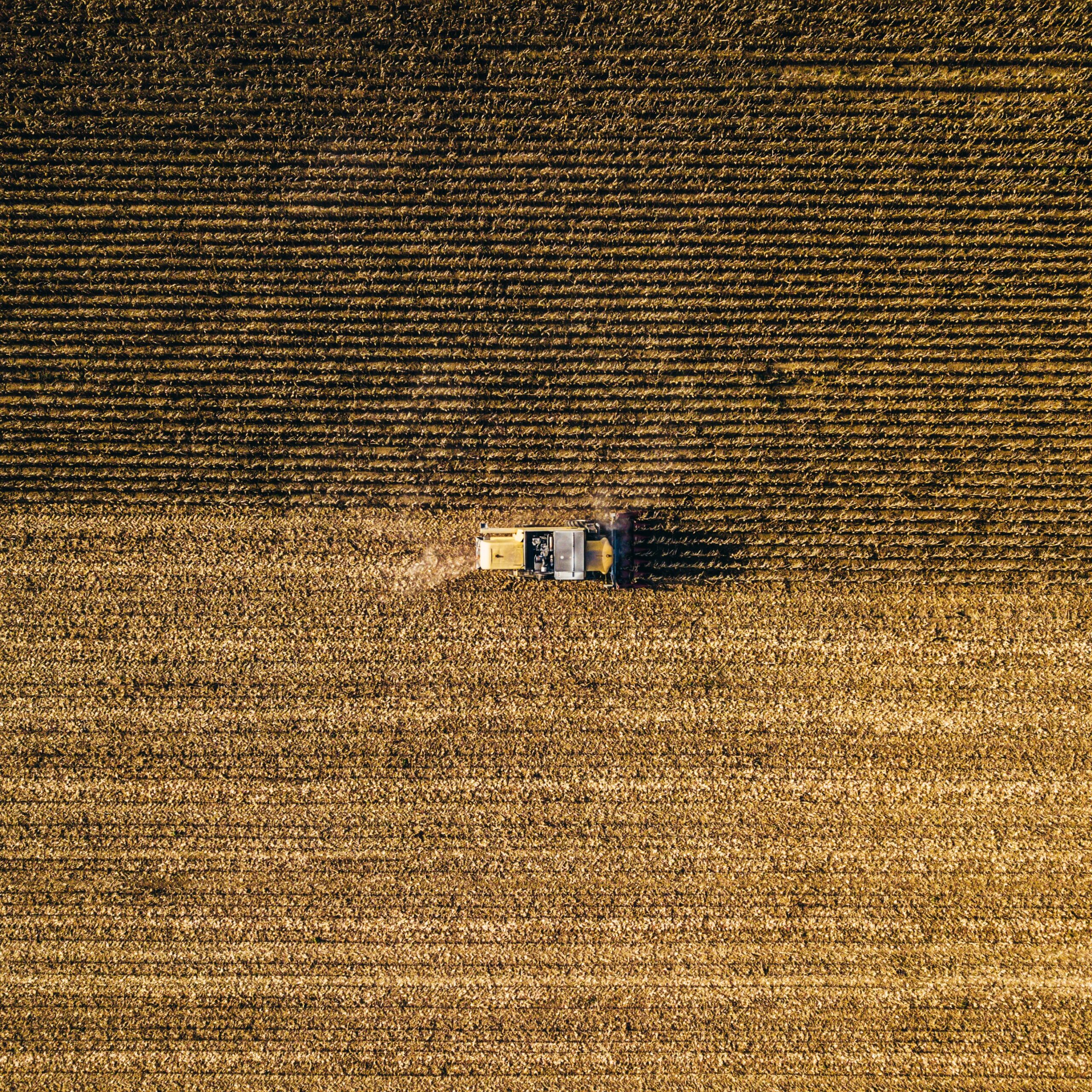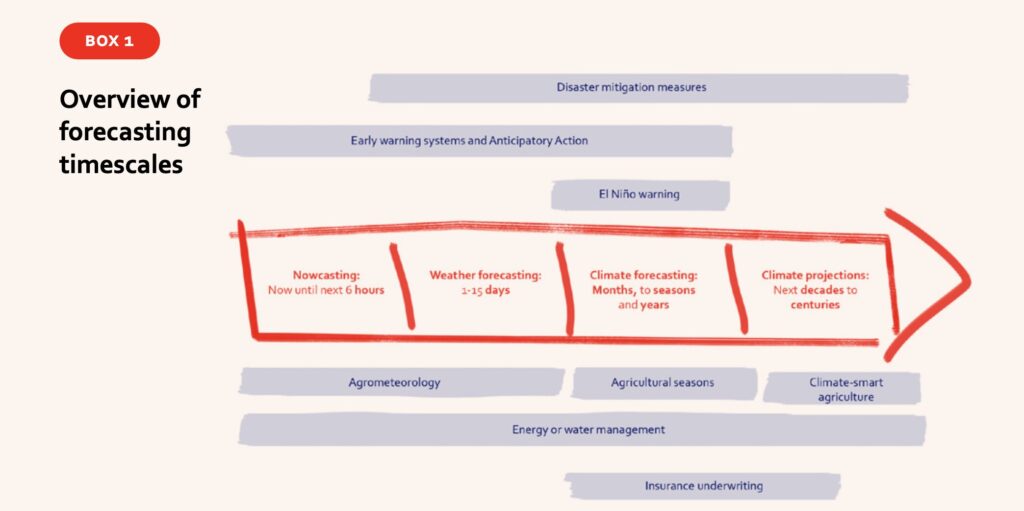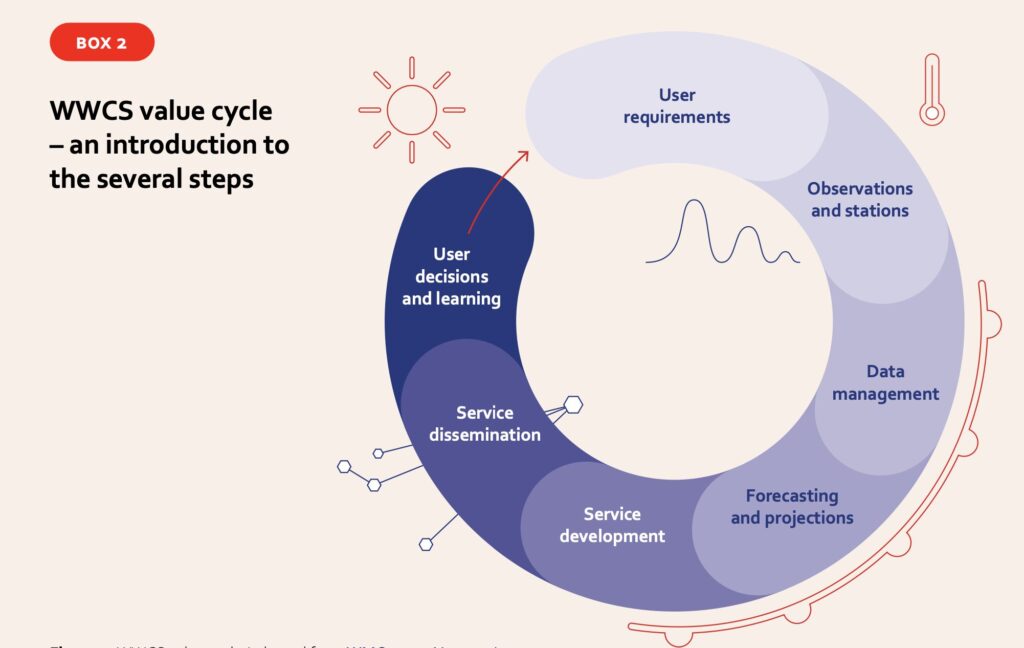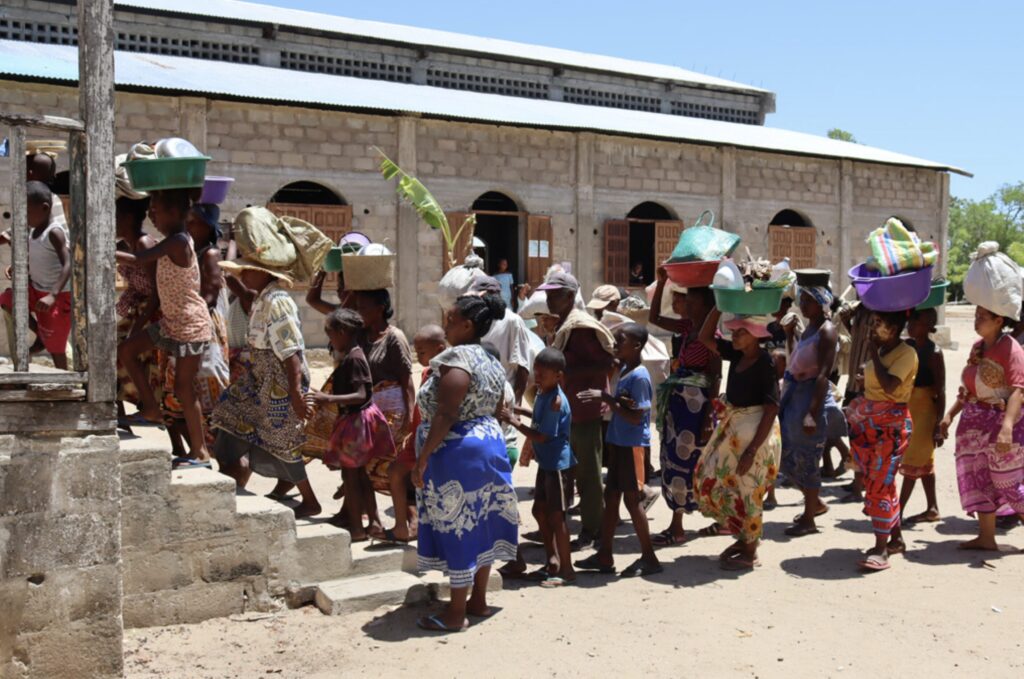Unlocking NGO potential for effective weather, water and climate services

This article is an abridged version of the original text, which can be downloaded from the right-hand column. Please access the original text for more detail, research purposes, full references, or to quote text.
Introduction
Weather, water and climate services (WWCS) play a crucial role in climate adaptation and disaster risk reduction (DRR). To be effective, they require the collaboration of multiple stakeholders with wide- ranging expertise and skills to manage complex processes. Non-governmental organisations (NGOs) often fill a gap to bridge the last mile to end users but can also assume further complementary roles and responsibilities. Irrespective of the approach adopted, it is essential for NGOs to have a good understanding of WWCS. This includes understanding their value cycle, their users, and key stakeholders and their possible roles.
This publication, was developed with financial contribution from SDC, is part of the Swiss NGO DRR Platform’s learning journey to enhance the understanding and improve the practice of NGOs working in WWCS. It aims to give basic answers to frequently asked questions while also reflecting on challenges and opportunities that NGOs may encounter. Five case studies from member organisations of the Swiss NGO DRR Platform underline the lessons learned and have guided the recommendations provided. The goal is to offer project managers and practitioners an additional perspective, and to support them in the design and implementation of future WWCS projects.
About WWCS
WWCS provide essential information about past, present, and future hydrometeorological and climate conditions. This information is crucial for understanding climate, adapting to changes, and reducing risks for our environment, agriculture, industry, and society. WWCS are indispensable in diverse decision-making processes, helping professionals to make informed choices that enhance resilience and sustainability.
Despite progresses in digitalisation and remote data collection, local data from ground stations remain critical since they are still much more accurate than satellite data. To improve ground observation, the United Nations (UN) has recently launched the Systematic Observations Financing Facility (SOFF) to support least developed countries in extending or rehabilitating ground stations provided that the collected data is made available internationally.

Recent improvements in the accuracy of forecasts is enabling the development of new applications that will become increasingly useful in the Global South. However, a significant degree of uncertainty remains because of the immense complexity of Earth systems. In any case, weather and climate information are only useful when it effectively informs a decision-making process. For example, it can guide decisions on whether to evacuate a city in the face of forecast heavy rains. Without local, sector-specific and user-oriented service development and dissemination, WWCS will find little application and won’t lead to informed action.
Whatever service an NGO project might support, the reliability of the service and the information provided are key for users and intermediaries. For NGO actors without expertise in data science, WWCS are often a black box, and it is difficult for them to assess the underlying processes and judge whether the forecasts generated are robust and reliable. Partnership with scientific institutions or expert collaborators is therefore important for NGOs aiming to engage in the co- development of WWCS in the Global South.
The WWCS value cycle
Rather than seeing the provision of WWCS as a series of individual activities, it is key to understand interdependencies among the services and the responsibilities of each stakeholder. To be effective, service users and service and data providers must work together and support each other throughout the WWCS value cycle.
A value cycle approach to WWCS involves analysing and optimising the entire process, from understanding user needs to end user application. User engagement and continuous feedback are critical principles for effective WWCS. The overarching rationale is that WWCS depend on various interconnected activities which create a societal benefit provided the cycle is closed – from the services to the user and back to the data generation.

Most WWCS providers today structure their activities according to this cycle. This can help them to identify where the largest potential for improvement lies in a given context.
Each stage of the cycle is explained in more details in the original report. (downloadable from the right-hand side)
The report explores the following questions:
- How can high-level science support local empowerment and locally led adaptation?
- What is the right mix of remotely and locally gathered data?
- What is the state of the art for weather stations?
- How can the private sector be involved as a stakeholder?
Recommendations and opportunities for NGO engagement in WWCS
WWCS are increasingly recognized and supported by NGO and community-based initiatives as important instruments for disaster risk reduction, adaptation to climate change and to decision- making based on hydro- and agro-meteorological advice. NGO-driven projects usually do not address the entire value cycle; it is therefore important for NGOs to identify the areas where their added value is greatest.
The strength of an NGO is its proximity to WWCS users. Technical expertise is available in national or international institutions (e.g. NMHS, WMO regional centres), and NGOs are not expected to become expert in this field but rather to support the efficient delivery of services and benefits for users by strengthening or supporting universal access and outreach, especially in remote and underserved areas. How to get started when developing a WWCS project is summarized in Box 6.
Here are some possible actions and roles for NGOs in the WWCS value cycle:
User requirements: NGOs represent or have strong connections with local communities; they are well positioned to make the voice of remote users heard and influence decisions on WWCS design. NGOs can add significant value, especially if their intervention is coordinated with other stakeholders.
Observation data and weather stations: Obtaining appropriate observation data is a must and NGOs can help provide technologies that demand less expertise such as low-cost measurement stations managed by end users who feed data to NMHS.
Recommendations:
- Always consider the cost-benefit ratio before deciding to invest in additional observation stations.port explores the following questions
- Standards are available on weather station siting and measurement methodology. Apply these standards even for low-cost stations, including simple rain gauges.
- Establish in advance how and to whom you will transmit the collected data.
- Consider the development of a measurement concept which guides decision-making on where additional stations should be placed.
Data management: Data must be stored in a data management system, maintained and processed. NGOs can assume responsibility for it but need significant expertise even when relying on existing software solutions.
Recommendations:
- All collected data should undergo basic quality checks to make sure the information is plausible.
- Data management requires ICT appropriate to the flow and volume of data. Consider whether your organisation has the expertise to do this in-house, otherwise seek an external provider (e.g. all-in-one station provider with database management).
Forecasting: Data and information gathered through an NGO-supported initiative can improve general or specific forecasts (e.g. local agrometeorological forecasts). Local weather bulletins compiled by an NGO can become a means to deliver value and create dialogue.
Recommendations:
- Substantial knowledge and know-how are required for forecasting and cooperation with national providers (governmental or private) is a must to support the system. It’s not possible to develop local weather forecasts based solely on local observation data. This is often misunderstood by communities and by staff.
- Improving forecasts can only be a long-term goal.
Service development: WWCS yield benefits when decision-making is improved. Thus service providers first need an understanding of the decision-making process and the needs of users in order to tailor the services to those needs. This is an activity where NGOs can make a significant contribution.
Recommendations:
- End-users should be the first and primary focus, though other stakeholders might also be interested in the data. These could be research bodies such as universities but also paying customers like insurance companies (e.g. providers of parametric insurance) who can represent additional sources of funding.
Service dissemination: Effective communication that reaches end users through suitable channels is key. NGOs can help ensure that the information is provided in language that is easily understandable for end users.
Recommendations:
- Find ways to convey that WWCS always contain an element of uncertainty and use language this is easily understandable for end users.
- Deliver information directly and free-of-charge to end users, especially emergency warnings. Early warning systems should be treated as an important public service.
User decision-making and feedback: Feedback from users is essential. NGOs can play a strategic role in improving feedback loops and pointing out critical gaps in the WWCS cycle.
Recommendations:
- Coordinating between stakeholders, building capacities and bridging the last mile to the end user is demanding in terms of both time and human resources and should not be underestimated.
- Exploit synergies with international actors (such as WMO) and ideally across national governments and their entities such as NMHS and with academia.
Experiences of the Swiss NGO DRR Platform
From national early warning systems to local agrometeorological forecasts, from Central Asia to East Africa and Central America, the range of experiences of member organisations of the Swiss NGO DRR Platform in WWCS is broad. Five member organisations have shared their WWCS project experiences in order to facilitate critical analysis and discussion that can inform and improve future efforts in this field.
This section of the report contains short summaries of the five case studies created for the platform’s learning journey on WWCS (report for further information):
- Tajikistan: Circular WWCS value chain boosts agricultural productivity (see p.20)
- Guatemala, Honduras and Nicaragua: Community-based weather and climate monitoring (see p.23)
- Nicaragua: Small-scale farmers as local climate masters – Climate resilience of food systems (see p.26)
- Madagascar: An integrated system that revitalises early warning systems (see p.29)
- Mali: Well informed – well adapted (see p.32)

their homes and head to the community shelter site. © MEDAIR 2022
The range of approaches applied, partners involved, and final services provided is very broad. The same applies to the challenges faced in planning, coordination and implementation. The case studies clearly show that NGOs can play an essential role in this complex system, especially in bridging the last mile, but very often also in knowledge transfer and translation work and as a coordinator recognised and appreciated by all stakeholders.
Tools, data portals and further information

Comments
There is no content